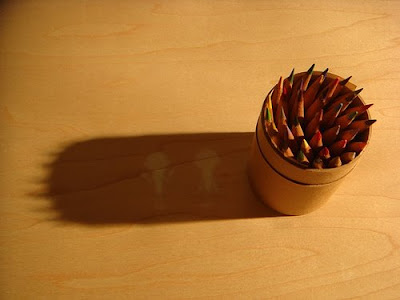If you’re new here, you may want to subscribe to my RSS feed to receive the latest Architectradure’s articles in your reader or via email. Thanks for visiting!
I came across an intriguing paper written by Professor Irene McAra-McWilliam, researcher that I admire. She reviews the history and contemporary understanding of the concepts of creativity and the imagination, referring to poetry and visualization to explore the role of the imagination, and to reflect on the concept of creativity.
Excerpt from her paper
I challenge the popular view of the Romantic poet as “mad, bad and dangerous to know”, and propose instead that these artists were committed to the project of understanding the creative imagination and being attentive to its modes of operation. Indeed many of their poems, such as Coleridge’s Kubla Khan (Coleridge, 1996, pp. 229-231), are expressions of their research. The Romantic project can be seen therefore as an attempt to understand the creative imagination through its own operation, and to articulate this in artistic expression. Poets such as Wordsworth and Coleridge were interested in how we see the world, and they proposed that the first act of the imagination was perception itself.
Summary offered by the Creativity or conformity conference:
Using examples from art, psychology and science, she illustrates a number of ways in which we have ‘imagined the imagination’. She proposes that education, with its increasing reliance on the jargon and practices of business and bureaucracy, has lost sight of its central role in developing the Keatsian concept of a ‘negative capability’ which is the basis of creativity: Negative capability, that is when man is capable of being in uncertainties, Mysteries, doubts, without any irritable reaching after fact and reason.
This ‘negative capability’ is the ability to deal positively with complexity, paradox, and ambiguity in processes which have uncertain contexts and outcomes. This capacity is increasingly of value in a world in which the contexts and fields of operation of academic disciplines, governments and businesses is expanding. Indeed, industry, whose leaders work within ‘wicked environments’ characterized by increasing complexity and change, is recognizing and rewarding this ability.
Professor McAra-McWilliam proposes that the current educational milieu, with its ‘final vocabularies’ of business and bureaucracy, is placing a relatively higher value on positive capabilities which lend themselves to measurement. Students’ and teachers’ negative capabilities are thereby marginalized or excluded, along with their ways of thinking and making, and their languages of expression.
She suggests that current educational models are driven by inadequate and outdated models of business which focus exclusively on productivity and results while, ironically, industry and management research is increasingly defining negative capability as essential to innovation in uncertain business environments. The presentation concludes by offering some insights into research practice in art and design as a means to reaffirm the role of education in the development of negative capability, and in imagining solutions to ‘impossible things’.
Posted by Cati Vaucelle @ Architectradure
…………………………………………………………………………………













